Interview with Director Ryosuke Takahashi about 'The Fable' and anime production, and how they fought because 'Mr. Tomino was working next to me, so we couldn't be the same'

The popular manga ' The Fable ' by Minami Katsuhisa, which has also been made into a movie twice, has been made into an anime and is currently airing nationwide on Nippon Television since April 2024. The film is directed by Takahashi Ryosuke, who has produced a wide variety of works for over half a century, including 'Fang of the Sun Dougram,' 'Armored Trooper Votoms,' 'Gasaraki,' 'FLAG,' and 'Bakumatsu Kikansetsu Irohanihoheto.' We had the opportunity to interview Director Takahashi, and we talked about this film as well as how 'Takahashi's works' are created.
=VAP= Official website of the TV anime 'The Fable'
[Main PV vol.1] TV anime 'The Fable' will be broadcast nationwide on Nippon Television from 24:55 on Saturday, April 6, 2024. - YouTube
[Main PV vol.2] The TV anime 'The Fable' will be broadcast nationwide on Nippon Television from 24:55 on Saturday, April 6, 2024. - YouTube
GIGAZINE (hereinafter, G):
In a comment made at the announcement of the production of this work, Director Takahashi said, ''It's like sticking a needle into a character on paper and blood comes out...' These are the words of the original author written on the inside cover of the first volume of the comic. This is exactly what the anime version of 'The Fable' is aiming for. The 'strength', 'kindness', 'chivalry' and 'madness' depicted in the work must be expressed by characters with hot-blooded blood that spurts out when they are cut.' What did Director Takahashi pay particular attention to in order to achieve this?
Director Ryosuke Takahashi (hereinafter, Takahashi):
I think that I was careful, but the original characters were already drawn that way. Each character has a sense of reality. For example, the young boss Ebihara. As a person in the underworld, I wonder if there is a person who is as good as him (laughs).
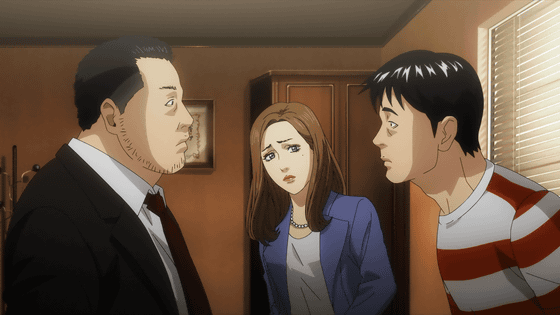
G:
(lol)
Takahashi:
However, if I were to describe the people of the underworld in one word, I thought that they have a part that cannot survive in normal society, that is, 'after all, a man needs skill and strength.' When I create stories, one of my models is American literature from the 1930s. In other words, hard-boiled works such as Raymond Chandler. There are phrases like 'a man cannot survive unless he is strong' and 'The Asphalt Jungle,' but on the other hand, there is also the phrase 'There is no meaning in living if you are not kind.' In such an environment, what kind of feelings does the protagonist have as he swims through the story? In that respect, I think Ebihara is following in his footsteps. He lives as a yakuza, which is a man's world, so he has to be strong. But he doesn't lay hands on a girl like Misaki.
G:
Hmm.
Takahashi:
Even with his subordinate Kojima, he thought 'He can only live as a yakuza' and looked after him, hoping that he would do well under his own control, but he ended up acting contrary to his own feelings. It would have been nice if there was some way to save him, but that didn't happen, and as things progressed, he could have had Sunagawa deal with it if he had been sneaky, but in the end he ended up doing it himself. In that way, it feels like the character is also shedding blood in the way he lives his life. It was my policy from the beginning not to portray this in a soft way, and I think it is a sign of my gratitude to them for providing me with the original work.
G:
I see, so that's the meaning behind it.
Takahashi:
But not all of them are strong. There is a character called Kainuma-kun, and I think I am about 80% like him, and all boys have some of Kainuma-kun's traits. Whether they become like that or not depends on their education and how they learn common sense. As the story progresses, it is argued that 'modern parent-child relationships are a little distorted,' but if a child is spoiled, they let their desires run wild. They don't want to show their ugly side, and they don't want their blemishes to be known, but they want to achieve their desires. That's when they turn to their mother. As a result, they fall into the hands of evil.
G:
yes.
Takahashi:
If Sato had been portrayed as more versatile, I think he could have helped Kainuma-kun. But by giving the characters a lifelike reality, an unavoidable tragedy would occur. This is properly depicted in 'The Fable' and is a consistent policy of the work, so I approached the production with the understanding that this is an aspect that should not be violated or changed as an anime director.

G:
In the comments of the original author, Minami, there was a mention that Director Takahashi and others came to his hometown. Since Minami is from Kishiwada, did he visit Kishiwada?
Takahashi:
I went to Kishiwada. One reason was that I wanted the atmosphere of Kishiwada to be well depicted in the art settings for anime production, so I wanted to experience the atmosphere together. I myself have had the opportunity to ride the Kintetsu Minami Osaka Line for about 15 years, so I have experienced the atmosphere of Osaka, but I wanted the other staff in Tokyo to feel Osaka. Of course, it was also meant as a courtesy visit.
G:
Director Takahashi has a long career and has worked on many projects, so I found the interview very informative and helpful. He was basically born and raised in Tokyo, but apparently he also lived in Osaka for a while.
Takahashi:
I didn't live there, but I slept and woke up in Tennoji about three days a week while teaching at Osaka University of Arts. Nearby was Tobita, a historic entertainment district, and a short train ride away was Amagasaki, so I wandered around there. People from Kansai sometimes told me, 'I don't go to that area,' but the place where I grew up had a similar atmosphere, so I never felt scared. Maybe that's why people say there are some differences between Kanto and Kansai, but I don't feel much difference. If there were more clear differences, my drawings might be different...
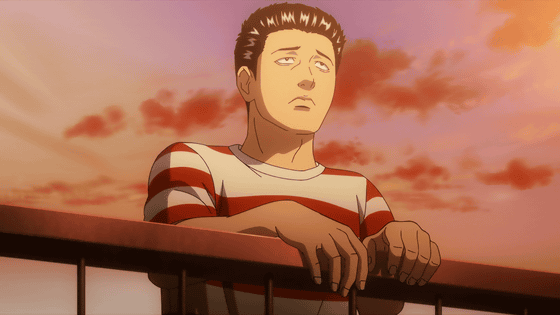
G:
That's right.
Takahashi:
When it comes to dubbing, I have trouble telling whether the Kansai dialect is correct or not, so I leave it to someone who is more knowledgeable to give me guidance and help.
G:
After watching the first episode of the anime, I compared it to reading the first episode of the original manga and felt that the tempo was different, that 'this scene will proceed quickly, and this scene will proceed in detail and carefully.' The rhythm of manga and anime are completely different, so I often hear that you can't make an anime by simply cutting and pasting frames, but were there any difficulties that Director Takahashi encountered in turning it into animation this time?
Takahashi:
The most difficult part of this work was drawing the characters.
G:
Is it a picture?
Takahashi:
Animation has a strong symbolic quality, which is one of its advantages. Of course, I think that all creative works, including manga, are highly symbolic. However, the original work of 'The Fable' does not rely much on symbolism. Rather, it is made without relying on symbolism, eliminating it in the character expressions and scenes. I thought that this was something that had to be taken care of, so I struggled with the first four episodes.
G:
Apparently, it was quite difficult to capture the essence of the piece.
Takahashi:
As a director, I thought that organizing it as pictures would result in a higher quality animation, but as I made episodes 4 and 5, I gradually got the feeling that it was coming together as intended. I think I've created something that doesn't rely too much on symbols.
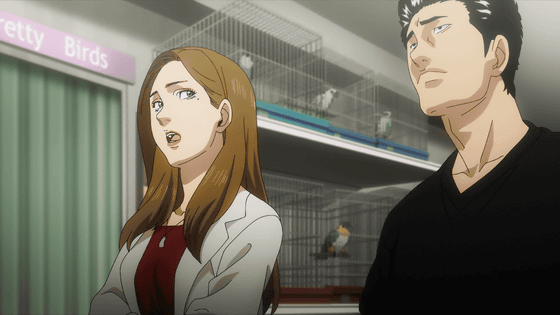
G:
I'd like to move away from the topic of 'The Fable' for a moment, but I would like to ask a question to find out what kind of person Director Takahashi is, the man who has brought this work to fruition. In a column published in Sunrise World, Director Takahashi said that his first job was at Itochu Motors . Wikipedia also says that he was a salesman ...
Takahashi:
I was in the office, not the sales department. I got along really well with the sales people, and we would go to see clients together (laughs).
G:
After that, before entering the anime industry, he attended Meiji University's Faculty of Letters II .
Takahashi:
While working at Itochu Motors, I attended night school at university and began studying screenplays and playwriting, but gradually my focus shifted towards anime.
G:
Was there any particular reason that led you to work for Itochu Motors?
Takahashi:
I went to a business school, so most of the students there got jobs at banks or trading companies, and Itochu Motors was the company that accepted me.
G:
So, you were attending school at night, but what made you choose Meiji University?
Takahashi:
The Itochu Motors building was in a building just outside Akasaka Station on the Marunouchi Line, 10 seconds from the station. Of course, that was the front entrance, so we went around to the back when we went to work. This is an old story, but at the time there were only the Ginza Line and the Marunouchi Line on the subway, and the Hibiya Line hadn't even been built yet. If you took the Marunouchi Line towards Ueno, you would come to Ochanomizu, where Chuo University and Meiji University were located, so it was convenient for you to stop by on your way home.
G:
Was there anything that you learned at university back then that you felt was useful in leading up to The Fable?
Takahashi:
I can't really think of anything I learned (laughs), but at the time, out of all my friends who attended the same university, I was the only one who gradually moved towards being a creator. I had no intention of quitting my job, but partway through, I started to think, 'Oh, so there's a world like this,' and at the same time, there was an atmosphere from around me that 'You're going to go in that direction, aren't you?' My job itself wasn't related to anime, but I drew all the posters for company events and things like that, and I was often selected for the advertising copy competition for a magazine called '
G:
oh!
Takahashi:
In that kind of environment, I found myself drawn to the idea of 'creating something.'
G:
In Director Mamoru Oshii's book ' Fight to Win! Director Zekkyo Edition ,' Director Takahashi is quoted as saying, 'The essence of a series is only in the opening, the writing, and the previews for the next episode. My role is to take care of those. I'm confident in that, and it suits me. Anyone else can do the rest.' Is this true?
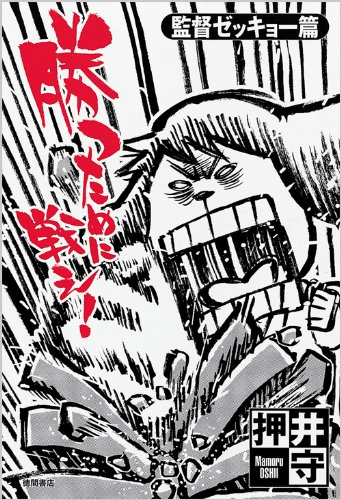
Takahashi:
There are many types of directors and creators, and roughly speaking there are those who want to do everything themselves and those who think of the work as a comprehensive art created through teamwork. I'm the latter, and I think it's easiest for an anime director to be at the center with a comprehensive perspective and make the most of the professionals who participate in the work. In fact, it's easier than carrying everything on your own. You create a story with the help of a scenario writer, and create a visual world with the help of a designer. That's how it's created by everyone. By doing that, individuality spreads out. However, it would be lonely if you couldn't tell who made it unless you said it.
G:
surely.
Takahashi:
So, what we need to do to make it clear to people at a glance that 'this is a Takahashi Ryosuke work' is the opening, the ending, and the previews for the next episode.
G:
Ah, I see, in that sense!
Takahashi:
It's like the wrapping paper. Of course the contents are important, but I design the wrapping paper. I stamp my name 'Takahashi' right in the middle (laughs).
G:
(lol)
Takahashi:
When I was in the night school, I was also considering becoming a copywriter, so I could write short sentences as much as I wanted, and I also wrote previews for the next episode. Writing puts a lot of pressure on people. However, if you say it's a little unfair, I guess it's because I added a 'Ryosuke Takahashi-style' flavor at the end (laughs).
G:
In your serial in Sunrise World, you listed two keys to surviving in the industry: 'Don't get attached to many' and 'Don't follow trends.' You said, '
Takahashi:
I don’t know what it is now (laughs).
G:
!(lol)
Takahashi:
However, the reason I chose those two as the secret to surviving is that my first time directing an anime was 'Zero Tester', and then I did 'Cyborg 009' and 'Fang of the Sun Dougram'. Those were successful works, but I think there were more amazing works at the same time and I was overwhelmed. There were times when I even thought that maybe I wasn't really a person of this world.
G:
picture!?
Takahashi:
The most extreme event was 'Gundam'. Yoshiyuki Tomino is older than me, but we joined Mushi Productions at the same time, and before we made Gundam, Tomino and I were just directors wandering around the industry together, and we weren't particularly prominent. But then Tomino made Gundam. When I saw it, it was a great work, and my seniors told me, 'You should do it too,' and asked me to get into the ring at the same time... I thought, 'What should I do, I can't do this.'
G:
What...
Takahashi:
Gundam was probably the first time that robots were depicted as something that actually existed. Up until then, robots were created by genius scientists in laboratories, and although we didn't know why they were created, they fought against invading enemies. However, Gundam is a robot that exists as a weapon in war, an industrial product. I'm sure there is a budget set aside for its production, and its origins are clear. So I thought, 'I can't do something that's just a pipe dream anymore,' and so I decided to depict the robots I was asked to work on as weapons.
G:
I see.
Takahashi:
Gundam leaves the White Base saying 'Amuro, I'm going,' and that is, first of all, the coolness of the Navy. Then, in the battle, there is the coolness of the Air Force. Of the three branches of the military, the Navy and the Air Force are depicted in Gundam... At the time, there was a movie called ' A Journey of Love and Youth ,' in which girls working in a factory gather next to officer candidates undergoing training, looking for their future husbands, and at the end, the one they thought would never come for them comes in a pure white military uniform and takes them away in a princess carry. It was so cool. From a woman's point of view, it might have been a 'no joke,' but it depicted the coolness of the military.
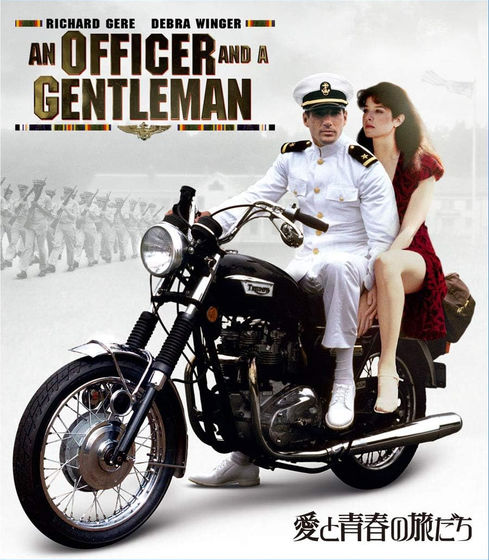
Takahashi:
If that were to happen, all that would be left would be an army made of blood, sweat, and dust. But the army made of blood, sweat, and dust also has its own rugged coolness. 'Ah, this suits me. There's no competition, so I'll go with this.'
G:
And so works like 'Fang of the Sun Dougram' and 'Armored Trooper Votoms' were born...
Takahashi:
Tomino-san works next to me, so we can't be the same. Tomino-san is someone who decides his position within the system. On the other hand, I don't think about how to get promoted within the organization or what kind of presence I want to have in society, but how to live as an individual, 'I hope I can live here.' There is no pressure, no need to be a leader, and there is a high degree of freedom. Since you can't get support from the organization, you won't be recognized unless you are a very strong individual. As a result, I decided not to do anything trendy.
G:
I see, that makes a lot of sense. From that perspective, do you sympathize with the position of the assassin in 'The Fable'?
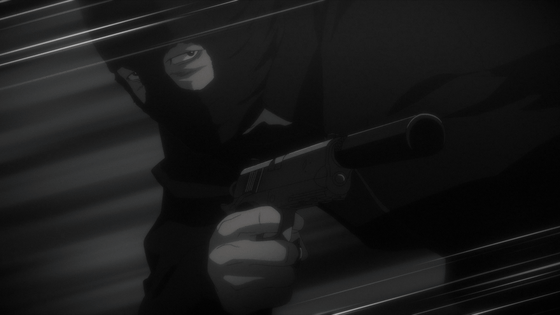
Takahashi:
Rather, it's the original author Minami who I feel an affinity with. Manga artists have to do everything by themselves, even if they have assistants. Furthermore, the world he depicts is a bit biased, but I think it's because that bias is so wonderful that it has become such a popular work. In that respect, I felt that there was an affinity with what I've done, and I thought that if I received an offer, I would definitely like to work on this work.
G:
This was the work that Director Ryosuke Takahashi was meant to work on. I've gone into some parts that are a little off topic, but thank you for sharing your thoughts with me.
Takahashi:
Thank you.
The anime 'The Fable' is currently being broadcast nationwide on Nippon Television. All episodes are also available for unlimited viewing and exclusive streaming on Disney Plus, and are also available for a limited time free on Kodansha's YouTube channel 'Full☆Anime TV,' as well as for individual subscriptions.
The distribution schedule on Full☆Anime TV is as follows:
Episodes 1-3: April 28, 2024 (Sun) 18:00
Episode 4: April 28, 2024 (Sun) 18:00 - May 5, 2024 (Sun) 17:59
Episodes 5-8: May 26, 2024 (Sun) 18:00 - June 2, 2024 (Sun) 17:59
Episodes 9-12: June 23, 2024 (Sun) 18:00 to June 30, 2024 (Sun) 17:59
Episodes 13 to 16: July 21, 2024 (Sunday) 18:00 to July 28, 2024 (Sunday) 17:59
Episodes 17-20: August 25, 2024 (Sun) 18:00 - September 1, 2024 (Sun) 17:59
Episodes 21-25: September 29th (Sun) 18:00 - October 6th (Sun) 17:59, 2024
[Episodes 1-3] The Fable special broadcast in case you missed it! #Official Anime - YouTube
[Episode 4] The Fable Limited time only available until 17:59 on Sunday, May 5, 2024! [All official anime episodes] - YouTube
Related Posts:







